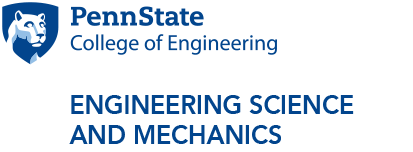Propagating instabilities in materials
Abstract: The onset of instability is one of the factors that limit the extent to which materials can be loaded or deformed. In some material systems, instability leads to localization of deformation, which after some growth, is locally arrested. However, under prevailing conditions, the local deformation can propagate and potentially destabilize the whole material domain. During the propagation of the instability, highly deformed and relatively undeformed “phases” co-exist. Furthermore, the effort required tends to remain essentially constant and lower than that needed to initiate the instability in the intact system. This presentation encompasses several material systems that exhibit this behavior known as propagating instability including: the evolution of deformation associated with phase transformation in shape memory alloys, the evolution of Lüders banding in mild steels, the propagation of crushing in honeycombs and foams, the broadening of failure in aligned fiber composites and wood, etc. The lecture will use results from experiments and modeling to illustrate that, although the physical micromechanical reasons that cause this behavior are different in each material system, they share an underlying up-down-up local response. How this guides their constitutive modeling will be demonstrated using numerical results.
Bio: Stelios Kyriakides received a B.Sc. degree in Aeronautical Engineering from the University of Bristol, U.K., and M.S. and Ph.D. degrees in Aeronautics from the California Institute of Technology. He is Professor of Aerospace Engineering and Engineering Mechanics at The University of Texas at Austin and holds the John Webb Jennings Chair in Engineering. Kyriakides' major technical interests are in the mechanics of solids, structures and materials, with an emphasis on instability of both structures and materials. His work is motivated by practical problems and usually involves combined experimental, analytical and numerical efforts. He has more than 225 publications, has co-authored two books, and has lectured extensively both nationally and internationally. He has pioneered propagating instabilities in structures and materials and had contributed to plastic instabilities and crushing of structures, plasticity, forming problems in manufacturing, localization and ductile failure of metals, the mechanical behavior of composites, etc. He served as chair of the Executive Committee of the Applied Mechanics Division-ASME, as President of the American Academy of Mechanics (AAM), as chair of the US National Committee of Theoretical and Applied Mechanics, and is Editor of the International Journal of Solids and Structures. His recognitions include the Warner T. Koiter Medal from the American Society of Mechanical Engineers (ASME), Membership of the US National Academy of Engineering, and Fellowship of ASME and AAM
Additional Information:
Please contact Lisa Spicer at lms8@psu.edu for Zoom information.
Media Contact: Lisa Spicer



